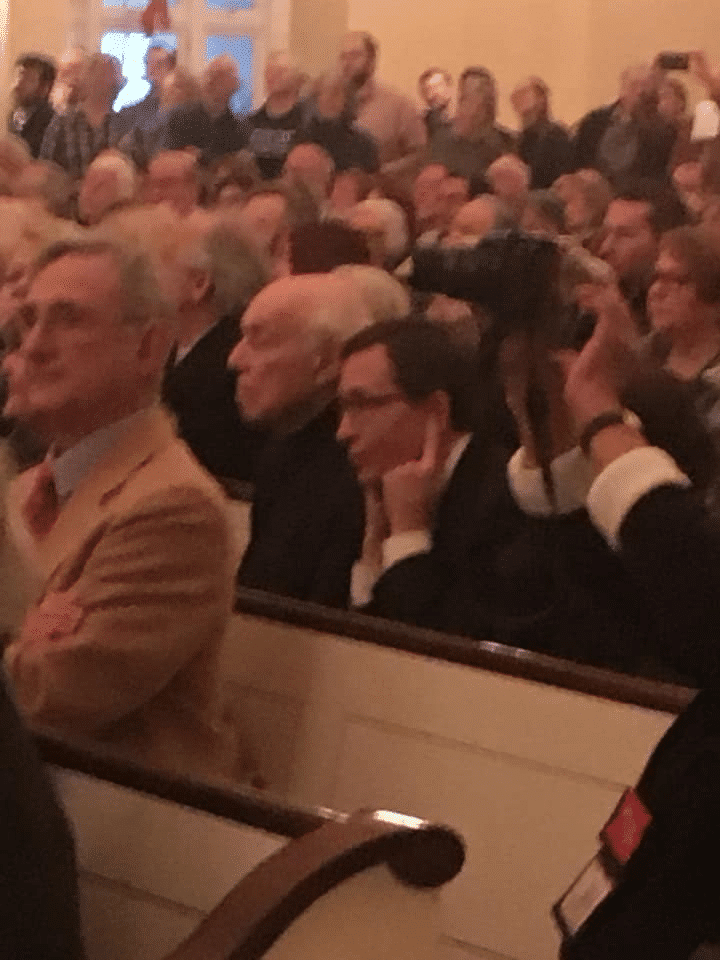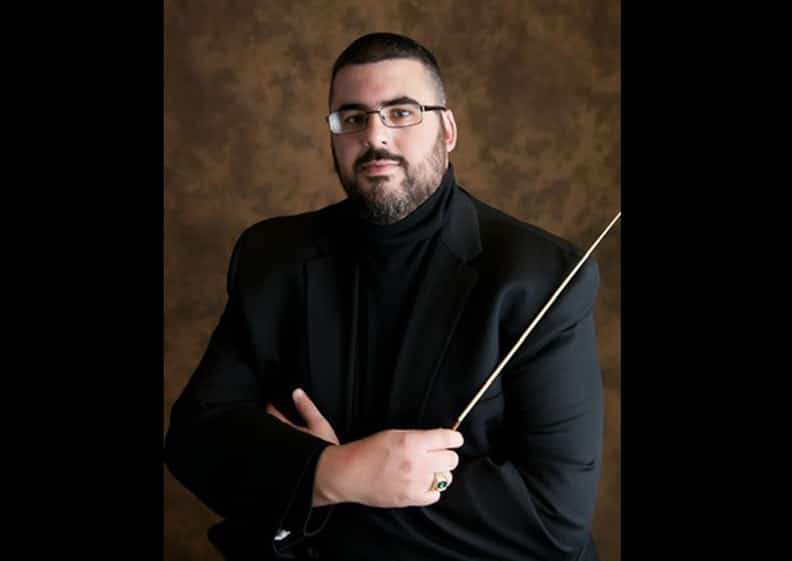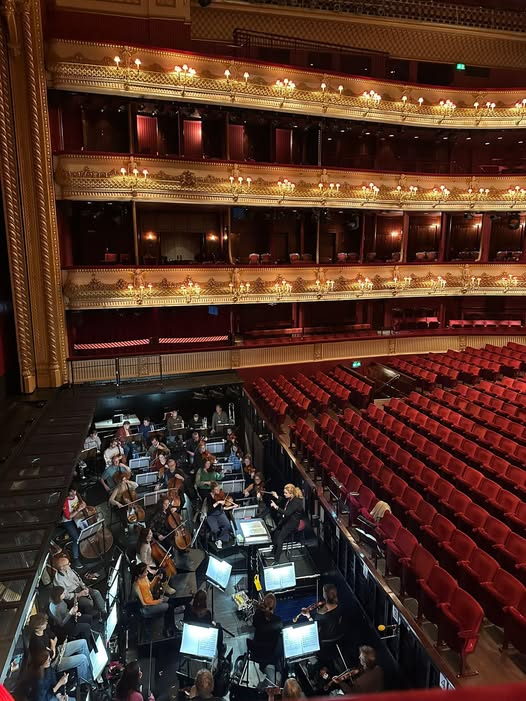Baltimore board: Let’s put our fingers in our ears
mainThis is the statement from the Baltimore Symphony Orchestra board that locked the musicians out. It is a signal to the rest of the musical world that the board is not listening any more.
Baltimore (June 16, 2019) – The Board of Directors of the Baltimore Symphony Orchestra approved a lockout of the organization’s musicians, Local 40-543, if an agreement between the musicians and management was not reached by the end of the regular subscription season. With no agreement reached, the lockout will go into effect on Monday, June 17, 2019.
“Due to the Baltimore Symphony’s urgent need to address longstanding financial issues and change its business model, the BSO has made this extremely difficult decision,” stated President and CEO Peter Kjome. “The BSO is a beloved and important cultural anchor for Maryland and our region, and it is vital that our community is home to an exceptional orchestra for generations to come. The BSO remains focused on resuming negotiations and working with our musicians and Local 40-543 to reach agreement on a new contract as soon as possible.”
Despite significant artistic achievements, the BSO has faced financial challenges for many years. There have been intensive efforts to increase revenues and manage costs – for example, administrative staff is leaner in numbers and in overall compensation than in 2009. As the BSO discussed with musicians during collective bargaining sessions last fall, again in subsequent bargaining sessions, and in Finance Committee meetings, the BSO is facing serious cash flow issues following years of substantial losses.
Although State legislation had sought to provide additional financial support for the BSO, the bill’s anticipated funding remains in question. After learning that the funding is very unlikely, the BSO cancelled its New Music Festival and three summer programs on May 30, 2019. A bargaining session scheduled for June 4, 2019 was cancelled at the request of the BSO’s musicians, and no additional bargaining sessions have taken place since that time despite multiple requests by the BSO. The BSO has no choice but to confront immediately its very serious financial issues to help preserve the organization.
When we published the picture below of Peter Kjome with his fingers in his ears, some felt we were taking unfair advantage of a well-meaning executive with a personal sensitivity to noise. No longer. Kjome and his coleagues have stopped listening to reason.







Kjome – sensitivity? The only thing this jackass is sensitive to is a free lunch. An utter failure in his job – and now tries to blame the musicians. Incompetence personified.
The difference between the level of community support for the Minnesota Orchestra “then” (palpable, including signs plastered all over white collar neighborhood lawns) and the Baltimore Symphony “now” (deafening silence) could not be more stark.
One wonders where this “view from America” originated. Community support for the Baltimore Symphony musicians has been strong and emerged long ago, when management made their initial proposal to slash musicians’ pay in late October 2018. A grassroots “Save Our BSO” committee was formed immediately, and posts to the Save Our BSO Facebook page regularly generate in excess of 1,000 hits.
The Baltimore Symphony musicians’ cause has been supported by civic leaders, including former Governor and Baltimore Mayor Martin O’Malley and Maryland House Delegate Maggie McIntosh.
When the musicians took the initiative to obtain support from the State of Maryland — passed overwhelmingly by the Maryland legislature — their efforts were supported by over 15,000 e-mails to legislators and other public officials. More recently, in the last two weeks, over 2,000 e-mails have been sent to the Governor’s office in support of demands that he release the appropriated funds.
Anonymous “comparisons” between the level of community support in Minnesota and Baltimore are inherently dubious. Regardless, the facts in Baltimore simply do not comport with these ridiculous claims.
As one of the best-known audience advocates in Minnesota, I call foul. The Baltimore community organized way faster than we ever did. (Save Our Symphony Minnesota wasn’t up and running as a formal organization until a year into Minnesota’s conflict.) Check out Save Our BSO, which formed months ago. Now the question is whether their board will listen to these patron and donor voices.
I questioned Peter Kjome’s qualifications here a couple of weeks ago. They are weak. I suggest he and the Baltimore board are the problems, not the musicians.
Hypothetically speaking (because I don’t know one way or another), when you question his qualifications, it might also be worth asking what that might mean, and who else they were or were not in a position to hire. It’s not impossible that some CEO candidates with longer resumes looked at the books, saw a mess like this on the horizon, and decided to pass, leaving them to take a chance on someone with less of a track record.
The musicians union in Baltimore must shoulder some of the blame in this situation. They are asking to be paid for more work than they actually do. The musicians in the orchestra are essentially part-time employees, yet they want full-time pay and benefits. From a simple economic standpoint, this is not a financially sound idea.
The numbers just won’t work.
So, Daniel….you must be new to the idea of how orchestras are run. quick question: are you related to any BSO board members, or just eager to pick up their ignorant cause?
If you reflect for a moment on professional sports teams and the players’ salaries, you’ll find that athletes and musicians alike play at extremely high levels, and to keep playing at that level they train throughout the year.
The BSO board members who support this draconian action clearly don’t understand “Arts Nonprofits” any better than this.
If you choose to educate yourself, here’s a great summary by Scott Chamberlain of this very trend.
https://maskoftheflowerprince.wordpress.com/2015/08/19/making-sense-of-sustainability/
Your comment belies your understanding? of full-time orchestra employees. Are you just another of the naysayers who claim that an orchestra’s actual 20/hr per week on stage is just part time work?
Yeah, they should have paid the great painters based on number of brush strokes….makes complete sense.
You should read the Whistler legal case when he was asked how long it took to paint the painting.
As the wife of a symphony musician for the past 28 years, I can attest to the fact that they do not work part time! Just because they do not work 9-5, does not mean that their schedule is light. In addition to scheduled rehearsals and concerts, which require high levels of individual performance and concentration, under the nose of their boss and large numbers of audience, they spend time preparing for the “big game” (concert) by practicing for hours. Hours of practice outside of the workplace, to stay in playing shape and to learn their music inside and out. To show up at a rehearsal unprepared would be unprofessional. Some of the musicians must also spend hours a week making reeds for their instruments, to have the best sound possible so their job will not be in jeopardy. Even on their days off (often just 1 day a week) musicians can be found shut in a room practicing for hours, to be prepared for the next concert.
They are small motor athletes. Constantly training and conditioning, and always expected to perform at the top of their games.
Surely you are aware that it is physically impossible for an oboist or horn player to have a “full time” i.e. 40 hr. work week? In the same way a player for the NFL or NBA doesn’t “work full time”. Whatever the numbers are you seem quite clueless as to what professional orchestra musicians actually do.
I’m late to this thread but hopefully this comment helps, although I suspect many people won’t be happy with it. It seems that in every orchestra labor dispute this topic comes up somewhere. Of course Daniel Layne’s comment about being part-time badly misrepresents the work that the musicians put in to be successful at their jobs. But getting all huffy and puffy about it doesn’t serve any purpose, and I’ll tell you why.
The problem is that a similar thing is true of so many other occupations and professions. At least in American society, the amount of time, effort and emotional energy involved in being a successful professional in a great number of fields (beyond a technical definition of “professional” as having a specific advanced degree) is awe-inspiring once you see it. These aren’t exact parallels with the practice and readiness demands of musicians, but they’re not completely far off either. And usually we’re talking about a 40-hour or more workweek on site as the starting baseline for these other fields. The further relevance is that it is so often these working-age adults who are now missing in the concert hall, including on weekends. There’s no point in making them feel like they’re not understood either, to whatever extent they’re alert to these conversations.
Look for example to one of the areas of public discussion in the recent Chicago Symphony Orchestra strike. The music critic of the Chicago Tribune became very involved in this sort of argument. It was obvious that he was receiving a lot of skeptical comments from readers on a variety of issues but including the Daniel Layne-type skepticism of working hours. The critic responded with a cri de coeur entirely adopting the musicians’ position and area of emphasis on this particular topic of the hidden demands of time and care on the part of the CSO musicians. A follow-up article seemed to indicate he may not have convinced many people as a result, although it was hard to tell for sure since the Tribune wasn’t publishing the comments that his articles were generating.
Now compare and contrast a major article that was published on April 10 at Chicago Classical Review. My own opinion is that Lawrence Johnson of CCR did a much better and more objective job in discussing the range of issues involved, and gently but firmly urging things in a particular direction. But the real telling point is the huge thread of 121 public comments that came in and are readily available at CCR. (Look under the subhead “Articles” rather than “Performances.”) Obviously the Chicago strike was substantially different than the Baltimore lockout, and the #1 issue on that thread had to do with whether the CSO musicians were justified in being fearful of a (very generously designed) defined-contribution retirement plan. But I leave you to check out that thread and tell me what you see with regard to effective communications on the labor side of these disputes.
Lest anyone doubt this from my comment, I am genuinely awestruck by the amount of time and care in unique tasks that, for example, an oboe player has to put in to consistently succeed over years and decades. In the Washington area I work largely in the field of musical theater, where the emotional catharsis of the main character halfway through Act 2 is invariably telegraphed by an oboe or English horn line. But in terms of resolving difficult matters like the BSO lockout and ensuring the future of what really is a very fine symphony orchestra, I’m all about making arguments that work in the public and political spheres, not just those arguments that make people feel good. Thanks.
Finally, someone who “gets” it.
If Kjome is so sensitive to “noise” or what most of us hear as great music, then maybe he should get out? If managing a great American orchestra is too “noisy” for him then he could try hall monitor in a school library somewhere. Quiet everybody! Ahh, that’s better.
Come on, Norman Lebrecht, have some compassion for Peter Kjome. It’s hard work ruining and orchestra and being so disingenuous. Very draining. And poor Peter, in addition to his tinnitus he can’t remember ear plugs for, his wife just left him. Now, he’s got ringing in his ears and has to find a way to pay alimony and divorce lawyer. Good thing he locked out all those musicians. You might want to rethink that wedding picture you keep using, so passé. Can’t believe that woman lasted those few years that she did.